Homemade apple butter is quite a treat and is always a well-received gift, but did you know that it’s super easy to make?
I’m not sure why commercially available apple butter always seems to have unsavory ingredients like high fructose corn syrup (ok, I know it’s because it’s a cheap sweetener), but when you learn how easy it is to make your own with only natural ingredients and add as much (or as little) sugar or other sweeteners as you like, you’ll never buy that yucky store-bought stuff again.
I first figured out how to make homemade apple butter after making applesauce and letting it cook a bit too long. I got busy. And distracted. It’s a thing around here.
Anyway, applesauce is a commodity in our house: we go through jars and jars and jars and jars (you get the idea). So I long ago learned it was more economical to make my own! Plus, I can use organic apples, and make it as chunky or unsweetened as I like. But one time I over-cooked the apples a bit, so I threw in some spice and apple butter was born!
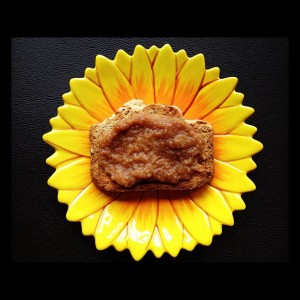
There’s no magic in making apple butter, as you can see from my video.

Since then, I’ve found so many wonderful ways to use my homemade apple butter, too! We’ve enjoyed it as a simple jam with homemade gluten free bread, of course, but also as an essential ingredient in homemade Gluten Free Apple Bread; Gluten Free Poptarts; Apple Butter-Sriracha Marinade; Gluten Free Apple Butter Granola; Apple Butter-Butternut Squash Casserole; and even the yummy filling to Gluten Free Doughnut Holes!
Dive in and make it a part of your autumn/winter rituals, and maybe even make some extra for holiday gift-giving! Homemade is from the heart!
And if you’d rather make pumpkin butter instead, go for it! Here’s a link to my eHow video showing how to make easy homemade pumpkin butter!
Click on this photo to see my how-to video!

How to Make Homemade Apple Butter
Ingredients
- 7-8 apples (I used a mixture of Fuji, Granny Smith & Gala) — approximately 4 – 5 lbs. (weight before coring) – (approximately 3 – 31/2 lbs. after coring and peeling)
- 1/2 cup granulated cane sugar or 1/4 cup palm sugar (to taste)
- 2 tsp. cinnamon
- 1/8 tsp. cloves
- 1/4 tsp. salt (optional)
Instructions
- Wash, peel and core the apples.
- Cut into quarters and place in a crockpot or large stockpot with 1/2 inch of water in the bottom. Cook covered on low for several hours, testing with a fork until the apples begin to fall apart (stir periodically, especially if using a stockpot).
- When they are able to be easily mashed with a fork or potato masher, break the large chunks apart and add sugar and spices. Depending on the apples you use, more or less sugar may be needed (more tart apples require more sugar for balance).
- Continue to cook until there are no more large chunks of apple and the mixture has turned a rich, dark brown color. Use a whisk or hand blender to purée the apples until completely smooth.
- Uncover the pot and continue to cook until the mixture has reduced to the consistency of apple butter. Remove from heat or turn off the crockpot and allow to cool before canning or storing in sealed containers.
- Enjoy with a delicious loaf of your favorite fresh, gluten-free bread or in homemade gluten free poptarts or even the yummy filling to gluten free doughnut holes!
** Please keep in mind that nutrition information provided is per serving, which may vary. While we have taken care to provide you with the most accurate nutritional values possible, please note that this information may differ significantly depending on the exact ingredients and brands that you choose to use to make this recipe. Additionally, where options are given for ingredients, the resulting calculation may include all ingredient options instead of only one per line, skewing the totals significantly.
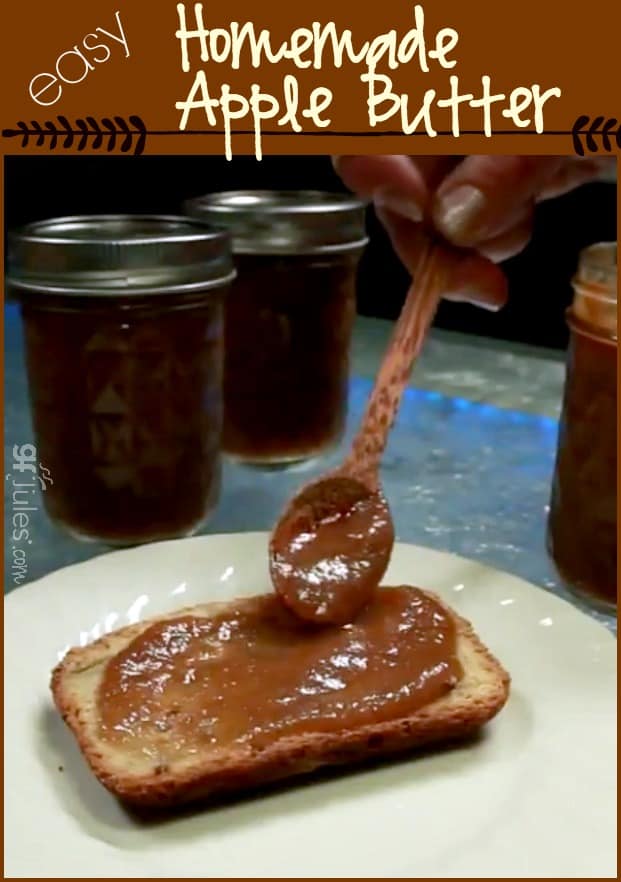



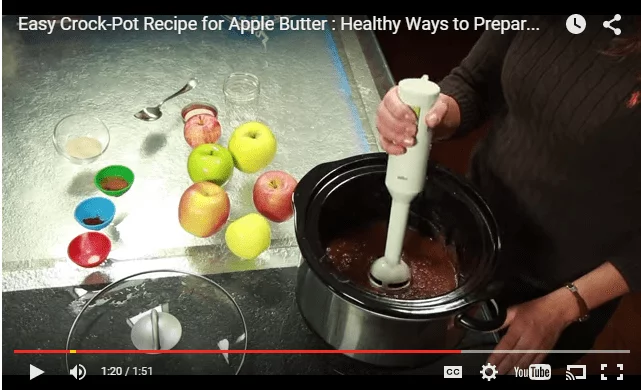
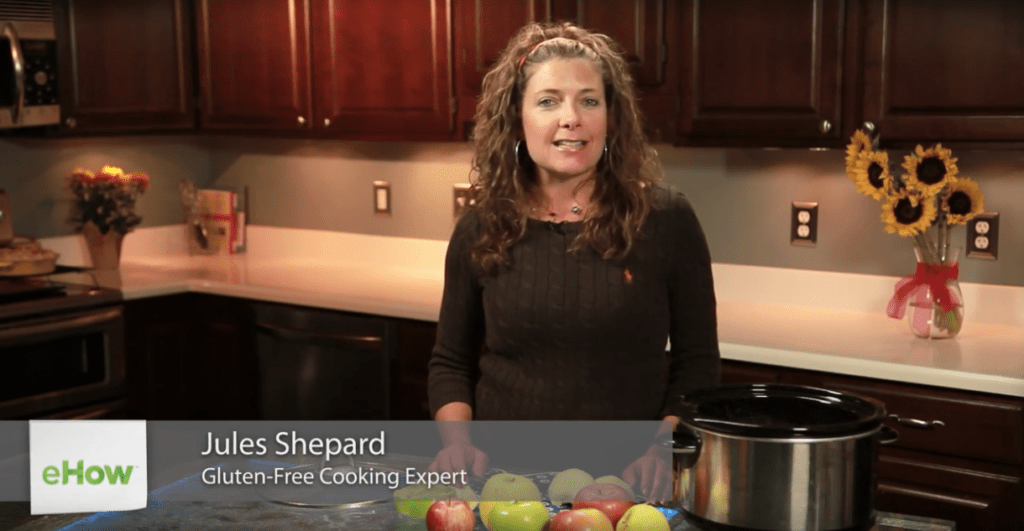











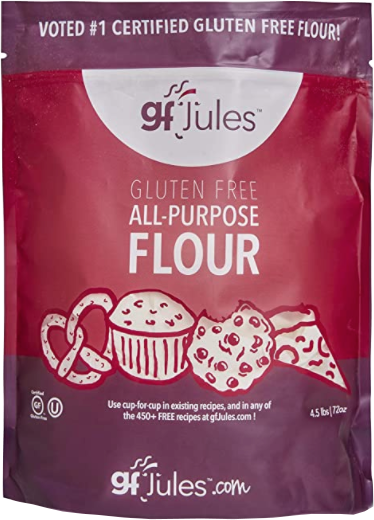
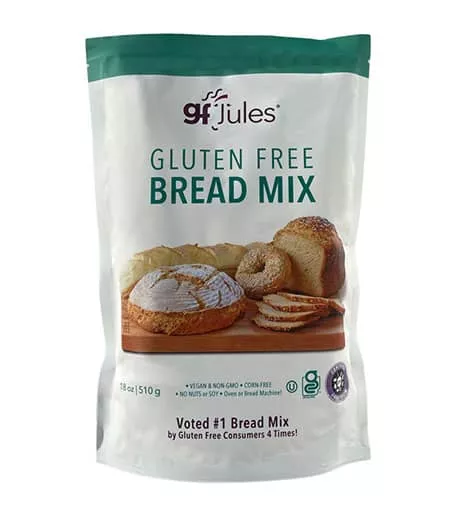

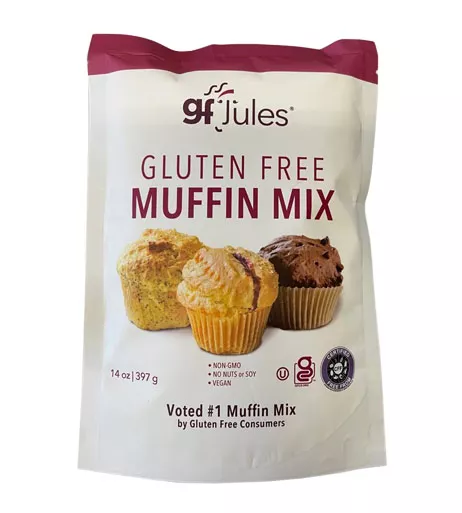


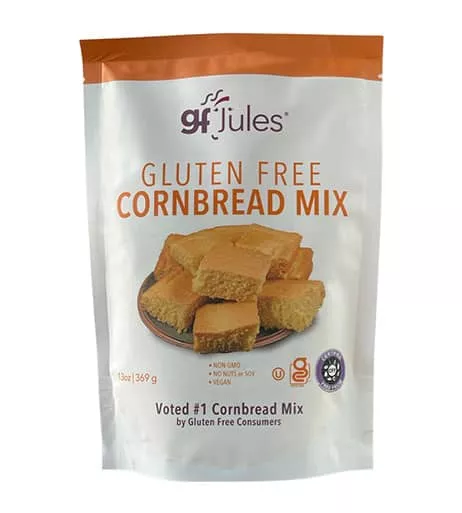



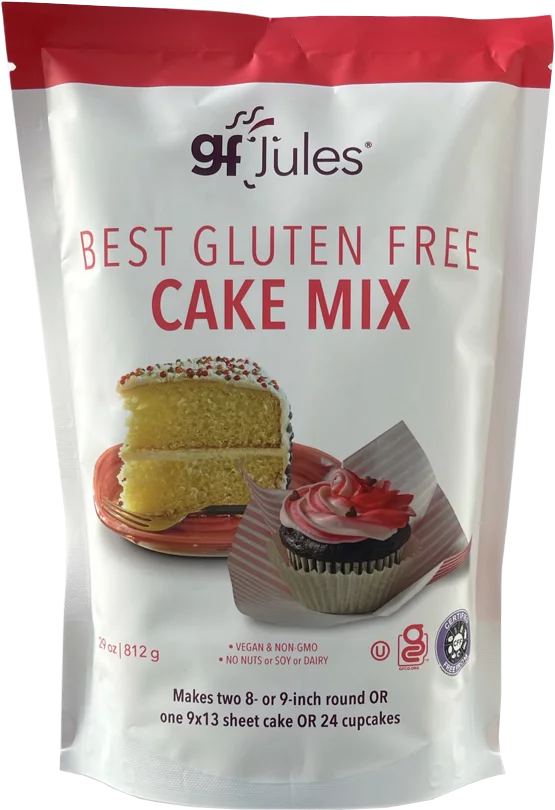
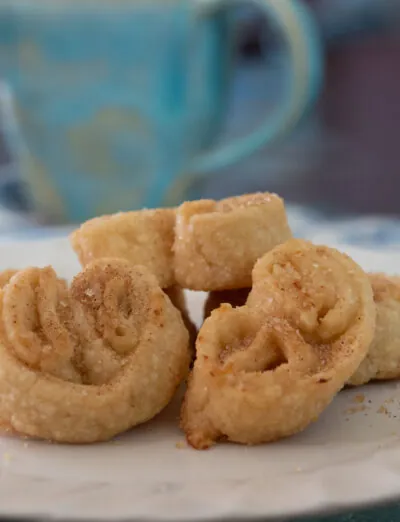

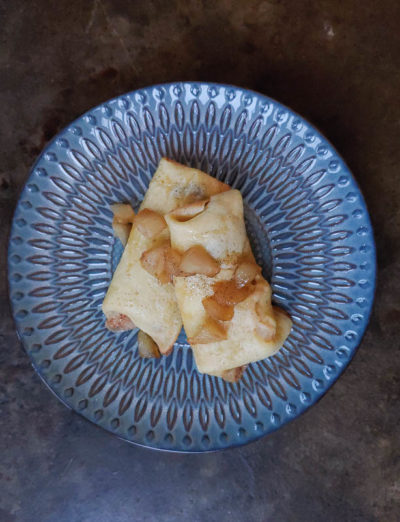
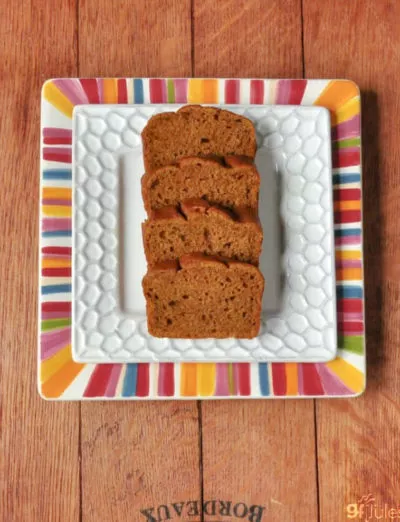







Any advice on how to can or store the apple butter. I’ve never canned and I’m not sure I want to invest in all the equipment. How long can you store it and how do you store it?
Do you can your apple butter? How would a beginner get started?
Wonderful questions Becky! I’m not a canner either; I keep thinking I want to try, but keep never having the time! So this recipe is perfect for you and me!! I simply make the apple butter and store it in small lidded jars in my refrigerator so that the ones I’m not currently using aren’t exposed to the air. I have kept jars in my refrigerator for up to a month and they have been totally delicious! I hope this helps you to want to try to make the apple butter, because it’s so easy and delicious and so great to have on hand!
~jules
I know this is a very late (and long) reply, but I’ve canned my homemade apple butter for years. I start with my homemade applesauce, and get my apple butter cooking in my crockpot while I can the remaining applesauce. I don’t know how much Jules’ recipe makes, but you’d need to add 1 Tbsp. lemon juice or apple cider vinegar (which I prefer) to the recipe per each quart before the mixture is reduced. You could probably gauge that by how big your crockpot is and how full it is in the beginning as the apples start to soften and cook down. Process your apple butter in pint or jelly jars.
Besides adding some acidity, the other big thing is making sure the lids are sealed. Test the seals on your lids *before* storing, by pressing down gently in the center — it should neither be able to be pushed down nor pop up when you stop pressing. If a jar didn’t seal properly, you can process it again with a new lid or refrigerate it to eat right away. Be sure to remove the screw-on rings after the jars have cooled completely and before storing in a cool, dark area where temps won’t fluctuate a lot. After storing, periodically test the lid seals on your jars. (NOTE: If the screw-on rings are left on the jars, a lid that has a broken seal might reseal if the ring is left on and is holding it down, but it would be dangerous to eat the contents. So remove those rings!)
But don’t let any of that that scare you. It’s well worth the initial work and occasional checking of lid seals. I try to make enough apple butter to last for a couple of years, but it rarely lasts that long. If the seal remains unbroken, the apple butter will last a long time, but the flavor and quality will gradually be affected after 2-3 years, even though it’s still edible. We love it, and I’m under orders to keep my daughter and her family supplied with apple butter.
Thanks for all the canning tips, Catherine! We eat ours too fast to bother with canning, but it makes sense if you make a ton at one time. Lucky daughter! 🙂
~jules
I only buy organic apples (anything apples) also & would love to know…Is it ok to only core & dice the apples = leaving the peel in tact? It would be so much easier not having to peel them if so & I wouldn’t mind the peel being in the mixture @ all.
Thanks!
I’m off topic, but I’m brand new to your blog and your products and wanted to say a big THANK YOU. My daughter is the gluten free person in the house, but I usually eat whatever she eats.
When our first purchase of flour arrived, we watched your video, and then made the buttermilk biscuits. We never dreamed that Sara would be able to eat sausage biscuits again, and we are amazed at how delicious the biscuits are. Thank you so much. We are looking forward to trying many more recipes from your books. Merry Christmas.
Oh Caron, you just made my day! I’m thrilled that you and your family are able to make delicious foods again, gluten-free. That’s the whole point! No sacrifices! A very Merry Christmas to you and your family, as well!!!
A very Merry Christmas to you and your family, as well!!!
If you can find them, Macintosh apples are great for sauce (but not chunky at all) or apple butter. Macoun (aka Macoon) is similar, but has a darker skin and makes beautiful sauce if cooked with the skins on and then run through a food mill.
Thanks for the tips on apple varieties, Dick!